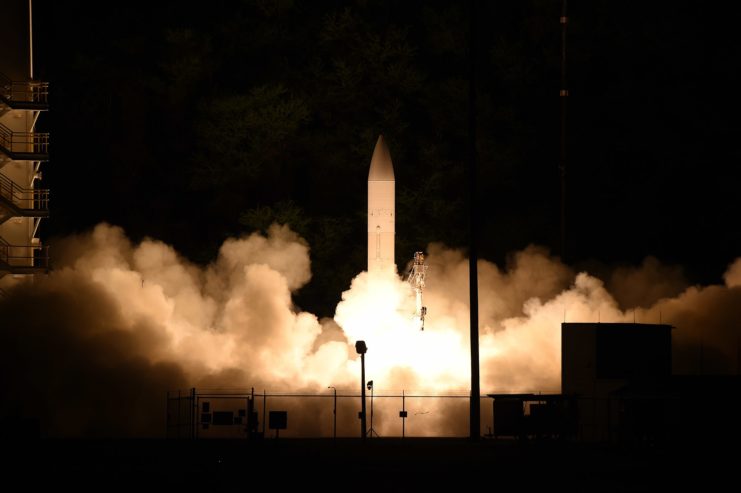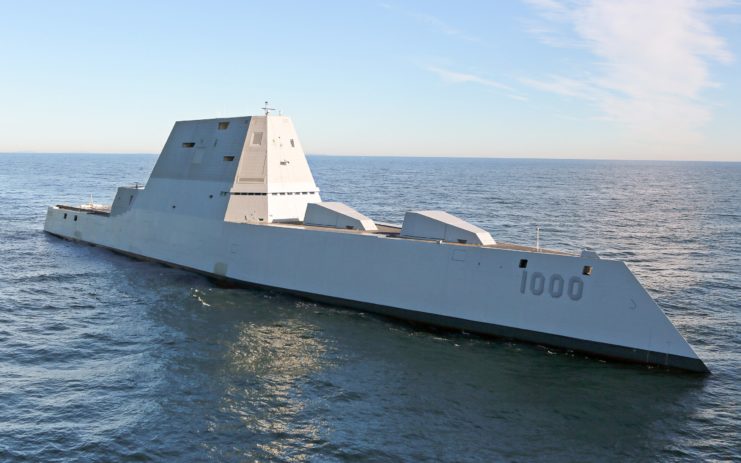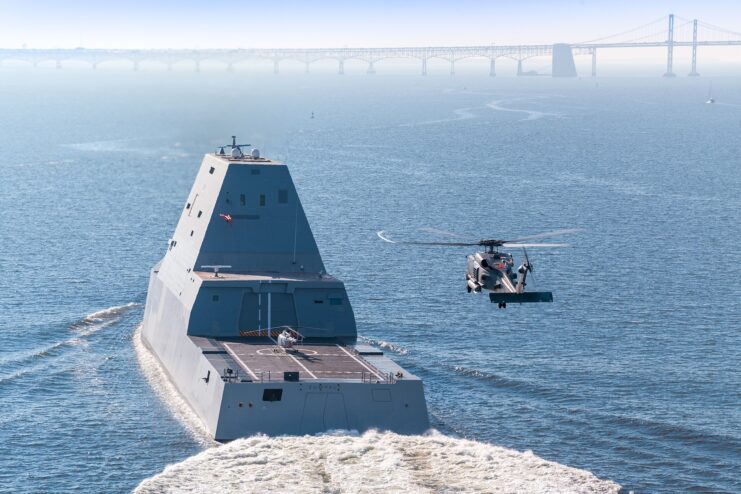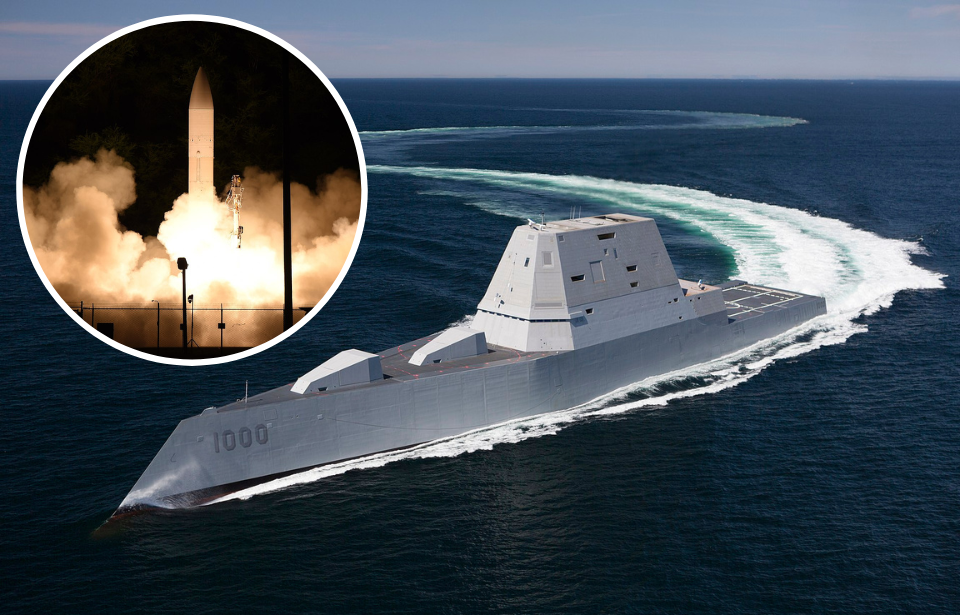The biggest research and development effort in the US Navy is hypersonic missiles – projectiles that move faster than the speed of sound. It had been assumed the service would outfit its cruise-missile submarines with the weapons before equipping them to other vessels. However, Chief of Naval Operations Adm. Mike Gilday has announced the Navy will first be placing the hypersonic missiles on Zumwalt-class guided-missile destroyers.

The Navy calls the hypersonic missile a conventional prompt strike weapon. It uses the common hypersonic glide body, which the service is developing in conjunction with the US Army. Launched via a conventional rocket booster, the body is the part with the warhead. One the booster is discarded, the projectile continues flying toward its target, and while no longer able to accelerate, it is steerable.
This, more than the missile’s ability to fly at speeds greater than Mach 5, is what makes it so hard to defend against – so much so that current defense systems aren’t capable of countering them. It’s this fact alone that’s made hypersonic missiles a key point of competition between the United States, Russia and China.

The Zumwalt-class of guided-missile destroyers consists of just three ships: the USS Zumwalt (DDG-1000) Michael Monsoor (DDG-1001) and the upcoming Lyndon B. Johnson (DDG-1002). The lead ship was first delivered to the Navy in May 2016 and commissioned a few months later.
The guided-missile destroyers were designed by Northrop Grumman Ship Systems, and Raytheon Company served as the systems integrator. General Dynamics Bath Iron Works, Lockheed Martin, BAE Systems Land and Armament, and Boeing worked on the project as well.
The Zumwalt-class are designed to operate in littoral waters, so the Navy is working to outfit them as blue-water surface warfare and naval-strike platforms. Their primary weapon was to be the Advanced Gun System, with its pair of 155 mm guns using Long Range Land Attack Projectiles. Reducing the number of Zumwalt-class ships to three raised the price per shell of ammunition to nearly $1 million per round, so the service was forced to reconsider its original plans.
The main issues the Navy faced before it could implement the plan were that the hypersonic missiles weren’t fully developed yet, and the vertical-launch-system cells on the Zumwalt-class destroyers weren’t large enough to hold the new missiles.
In the middle of March 2021, the Navy solicited defense industry partners for ways to reconfigure the Zumwalt-class vessels, so they could handle the new hypersonic missiles. In the solicitation, they requested an advanced payload module that could carry the missiles in a “three-pack configuration.”
By August 2023, work had begun on the ships to replace the 155 mm guns with four 87-inch missile tubes, each capable of firing three Common Hypersonic Glide Body (C-HGB) missiles. This new system will allow the vessels to hit targets around 1,724 miles away.
Gilday also mentioned that the Navy is looking for ways to use the power-generating abilities of the Zumwalt-class to use direct-energy weapons as a defense against emerging threats.

The title ship in the class was the first to receive the hypersonic upgrade, which reportedly cost $155 million. Work is anticipated to be completed sometime in 2025.
More from us: USS Idaho Is The First Ship To Bear That Name In 100 years
Are you a fan of all things ships and submarines? If so, subscribe to our Daily Warships newsletter!
After outfitting all Zumwalt-class guided-missile destroyers with the hypersonic missiles, the Navy plans to add the weapons to its Virginia-class submarines. The goal is to have the missiles fully installed on the former by 2028.
